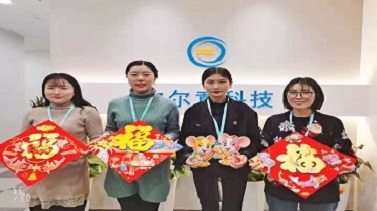2018 Annual Work Report of Plastic and Aesthetic Research (PAR)
The 2018 Annual Report meeting of Plastic and Aesthetic Research (PAR) was held on January 15, 2019. Smart Zhang, Managing Editor reported the development of the journal over the past year to all members of the editorial office. The main contents of the report are as follows.
Firstly, thanks to our Editor-in-Chief Prof. Raúl González-García, editorial board members, reviewers, authors and readers, in 2018, under concerted efforts of experts and all editorial staff, the journal insisted on publishing high-quality articles, and speeding up the process of publication and actively countered new challenges and innovations with better services for authors, readers and other experts.
In 2018, PAR has published a total of 45 articles, mostly original articles (Figure 1). PAR has always been pursuing high-quality publishing with scientific rigour by releasing contributions by authors from mainly 14 countries such as Germany, United States, United Kingdom and India (Figure 2). The rate of rejection is 44.19% in 2018. The 45 articles were read cumulatively 78,328 times in 2018, and were downloaded 3924 times. According to statistics, the most viewed article was a Review Article, entitled “Evolution of hair transplantation”; and the most downloaded article was an Original Article, entitled “Fat grafting as adjuvant to reduce scars in arm”.

Figure 1: Typology of articles published in 2018

Figure 2: 2018 Articles: Authors' Countries of Origin
By December 31, 2018, 43 articles had been cited multiple times (this data originates from the Web of Science), among which the two most cited articles were:“Twenty years of experience with the rabbit model, a versatile model for tracheal transplantation research” and “Assessment of the histological state of the healing wound”. Some articles were cited in some famous journals, such as PLOS ONE, Plastic and Reconstructive Surgery, etc. More cited articles can be accessed from “Most cited” on the home page of website of PAR.
By 2018, the readership had expanded to include 196 countries, and the proportion of readers from European and American had increased compared with the previous year (Figure 3). As the readership expands and the international influence grows, more and more renowned experts are inspired to set up special issues and support the development of the journal. Articles from these six special issues have been published : “Wound Healing and Plastic Surgery” led by Prof. Raymund E. Horch (Germany); “The Key to Costal Cartilage in Rhinoplasty” led by Prof. Hong Ryul Jin (South Korea); “Hair transplantation” led by Dr. Zhi-Qi Hu (China); “Applications of Biomaterials in Plastic and Reconstructive Research ” led by Prof. Wen-Guo Cui (China); “Advances in Microsurgery for Upper and Lower Extremity Reconstruction and Limb Preservation” led by Dr. Matthew L. Iorio (USA); “Facial Rejuvenation: From Scalpel to Syringe ” led by Prof. Raffaele Rauso (Italy). PAR also carried out extensive cooperation in 2018 and established close ties with 3 large international conferences, e.g., Singapore ENT Courses 2017, 9th 5-Continent Congress Barcelona, etc.

Figure 3: 2018 Readership Distribution by Country (%)
In 2018, the editorial team carried out overhauls in various aspects to improve and speed up the development of PAR. To improve the reader/author experience and achieve high efficiency in academic publishing, the website has been revised and upgraded. The new website of our journal was formally online on December 4, 2018, which is the third time overall upgrading of the journal website since 2015. The online submission system was working smoothly by Editorial Manager®, to make review simple and easy-to-use online. In 2018, 5 distinguished experts with remarkable influence both at home and abroad joined in the Editorial Board: Prof. Yi-Lin Cao (China), Da-Ping Yang (China), Jia-Ming Sun (China), Peter D. Costantino (USA), and Adrian Dragu (Germany).
The contribution and support from our Editor-in-Chief and all Editorial Board members, reviewers, readers, etc. in 2018 are greatly appreciated! Although some achievements have been made in the last year, we still have some questions and need to improve. In 2019, PAR will focus on establishing more influential special issues, insisting on publishing high-quality articles, and disseminating valuable articles to readers quickly, strengthening external cooperation and actively cooperating with more well-known associations or conferences, to improve the journal’s influence and promote the development this field together. 2019 brings a new beginning! Let’s forge ahead together! We’ll continue to provide our readers/experts with a high-quality journal you have come to expect of us.










